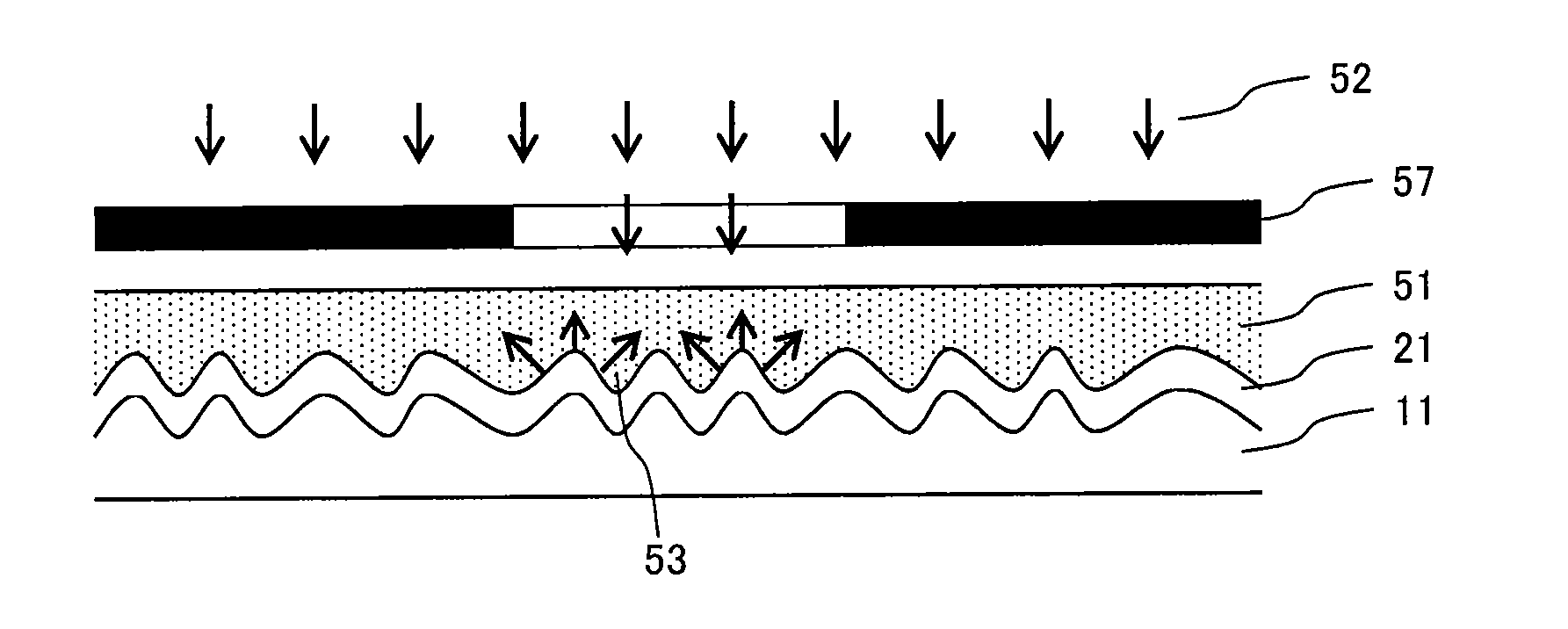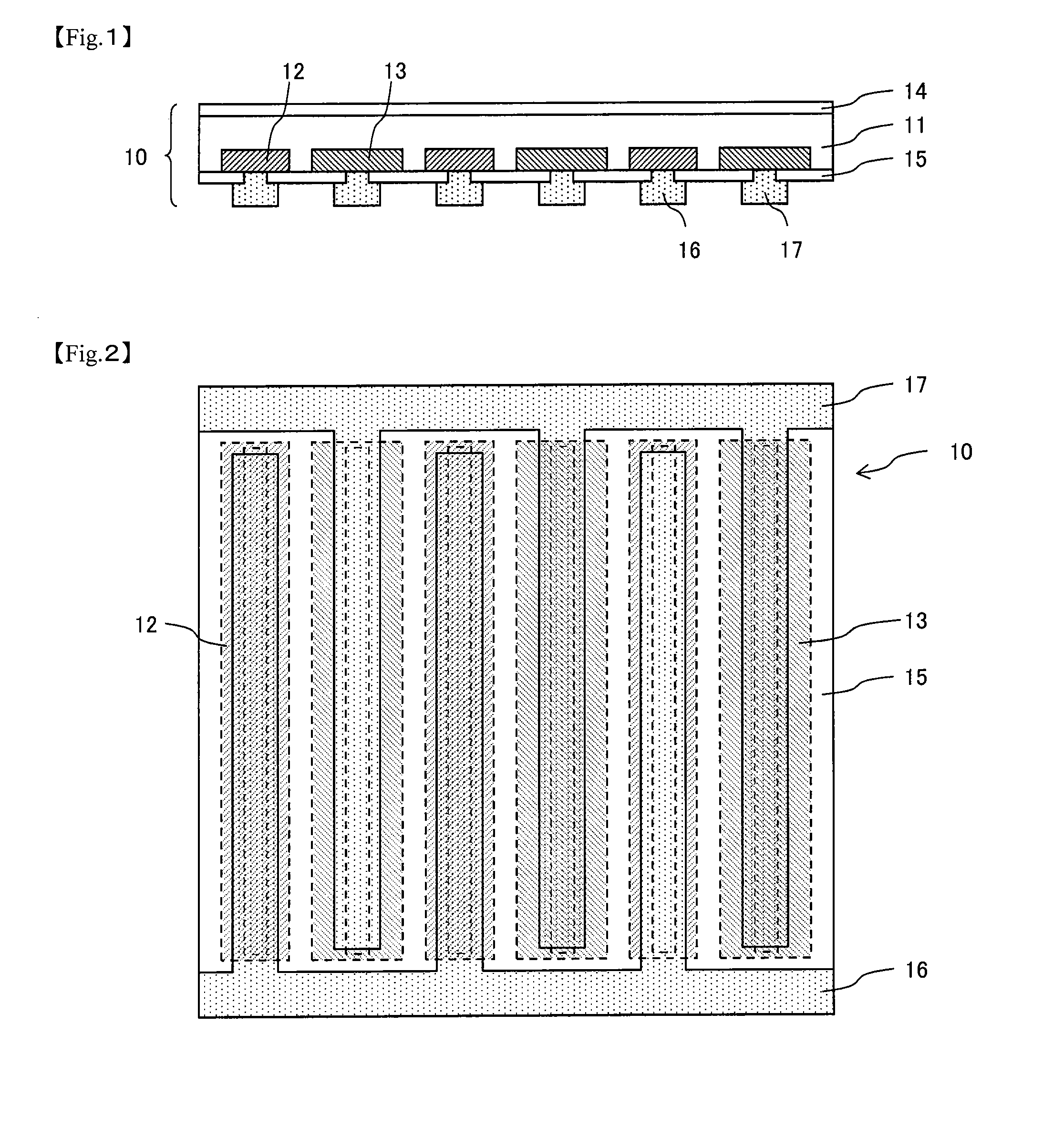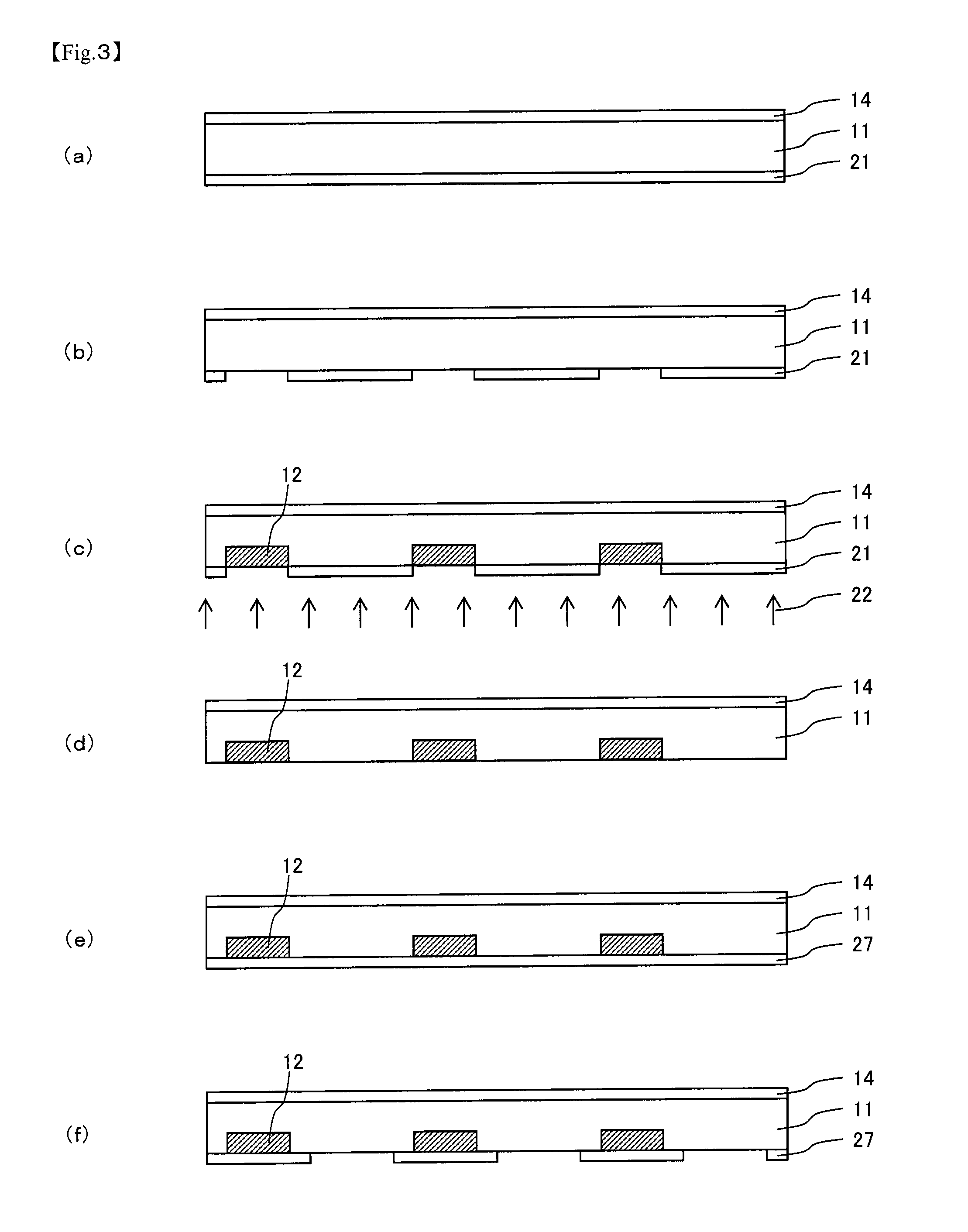Method for manufacturing semiconductor device and back-contact solar cell
- Summary
- Abstract
- Description
- Claims
- Application Information
AI Technical Summary
Benefits of technology
Problems solved by technology
Method used
Image
Examples
example 1
Manufacturing Method of Forming a Solid-Phase Dopant Source With Clearance
[0134]A back-contact solar cell was manufactured as described below based on the method shown in FIG. 6.
[0135]First, the semiconductor substrate 11 formed of n-type single crystalline silicon having the thickness of 250 μm and the length of one side of 100 mm was prepared and both surfaces thereof were etched by about 20 μm by a sodium hydrate solution and polished after water washing to remove slice damage and naturally-grown oxide.
[0136]Subsequently, (a) the passivation layer 14 having the thickness of 0.3 μm and formed of silicon nitride was formed on the light receiving side of the silicon substrate 11 by the plasma CVD method.
[0137]On the other hand, (b) an n-type doping paste was applied to the application surface (surface on the opposite side of the light receiving side) of the semiconductor substrate 11 in a stripe shape. Then, the n-type doping paste was heated at 150° C. for 30 min in the air and the...
example 2
[0148]The back-contact solar cell 10 was manufactured in the same manner as in Example 1 except that a mixed solution of 50 wt % of propylene glycol propyl ether (boiling point: 150° C.), 35 wt % of isopropyl alcohol, and 15 wt %) of ethyl acetate was used as the solvent of both doping pastes. The measurement of the shape of the n-type region 12 and the p-type region 13 in the same manner as in Example 1 showed that the interval between the n-type region 12 and the p-type region 13 was within a desired value ±8 μm in any measured region. The withstand voltage when a reverse bias was applied to a pn junction was also within the standard range and the back-contact solar cell 10 the same as in Example 1 was able to be manufactured. The amount of dry matter deposited at the nozzle tip was very small in long-time stripe application and the frequency of dry matter removal was significantly decreased when compared with Example 1.
example 3
[0149]The back-contact solar cell 10 was manufactured in the same manner as in Example 1 except that a mixed solution of 50 wt % of γBL (boiling point: 203° C.), 35 wt % of isopropyl alcohol, and 15 wt % of ethyl acetate was used as the solvent of both doping pastes. The measurement of the shape of the n-type region 12 and the p-type region 13 in the same manner as in Example 1 showed that the interval between the n-type region 12 and the p-type region 13 was within a desired value ±8 μm in any measured region. The withstand voltage when a reverse bias was applied to a pn junction was also within the standard range and the back-contact solar cell 10 the same as in Example 1 was able to be manufactured. No dry matter was deposited at the nozzle tip in long-time stripe application.
PUM
 Login to View More
Login to View More Abstract
Description
Claims
Application Information
 Login to View More
Login to View More - R&D
- Intellectual Property
- Life Sciences
- Materials
- Tech Scout
- Unparalleled Data Quality
- Higher Quality Content
- 60% Fewer Hallucinations
Browse by: Latest US Patents, China's latest patents, Technical Efficacy Thesaurus, Application Domain, Technology Topic, Popular Technical Reports.
© 2025 PatSnap. All rights reserved.Legal|Privacy policy|Modern Slavery Act Transparency Statement|Sitemap|About US| Contact US: help@patsnap.com



